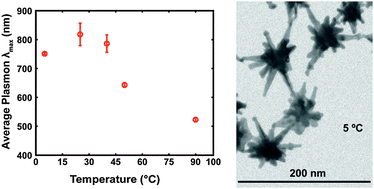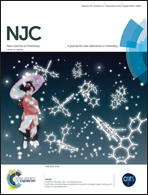Achieving plasmon reproducibility from surfactant free gold nanostar synthesis†
Abstract
Obtaining reproducible plasmon resonances from nanostars remains a challenge for both surfactant and surfactant-free syntheses. For any nanostar application, a plasmon band with a reproducible spectral profile and λmax is a fundamental criterion. In particular, synthesis of biocompatible gold nanostars will benefit from surfactant-free methods to alleviate concerns over the cytotoxicity of many surfactants used in current synthesis techniques and the relative ease of synthesis. In this paper, we analyze different surfactant-free nanostar synthesis conditions and their influence on achieving plasmon reproducibility. Plasmon reproducibility was judged via the standard deviation of the extinction spectra's λmax and the spectral bandwidth. The synthesis temperature was the most influential factor in producing gold nanostars with reproducible plasmons. Nanostars synthesized at 5 °C exhibited a statistically (α = 0.05) smaller standard deviation in both their λmax and spectral bandwidth than nanostars synthesized at 25 °C. The reproducibility of the plasmon band was preserved even when the reaction conditions were adjusted to shift the position of the peak plasmon resonance. The high reproducibility of this approach, combined with the ease of synthesis, presents a significant step towards achieving gold nanostars with reproducible plasmons for biological applications. For example, photodynamic therapy, biomedical imaging contrast agents, and biosensing will all benefit from the reproducibility of the nanostars plasmon bands.


 Please wait while we load your content...
Please wait while we load your content...